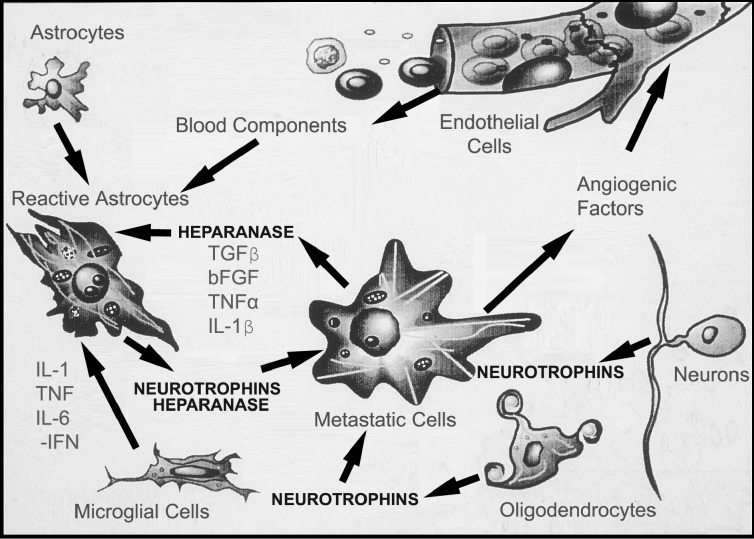Fig. 4.
Reciprocal interactions between brain-invading melanoma cells and normal cells in the brain microenvironment. Tumor cells release cytokines that can affect host cells such as parenchymal cells, endothelial and glial cells, astrocytes, and brain tissue extracellular matrix (ECM). Reactive astrocytes can arise from stimulation by factors released by invading melanoma cells. In turn, brain cells can release factors that stimulate tumor cell motility and invasion. Astrocytes, oligodendrocytes, and neurons can release NT and ECM degradative enzymes, for example, heparanase produced by astrocytes (Marchetti et al., 2000) in response to brain-invading melanoma. Conversely, these cells secrete growth factors and cytokines which can synergistically regulate NT synthesis and activity in normal brain cells.

